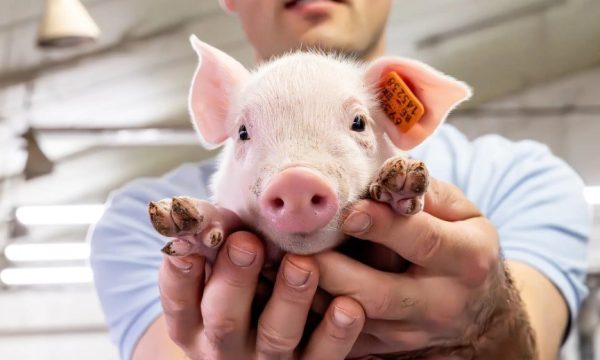Press release Tail-biting in pigs is subject of new research commissioned by Flemish Government
Over the next 3 years, ILVO will study the phenomenon of tail biting in pigs, commissioned by Animal Welfare Flanders. The research is part of the transition to a pig husbandry system in which piglets' tails are no longer cut. The project should identify the various risk factors for tail biting and propose possible control measures for each of these risks. It includes observations and small-scale experiments planned at a number of pilot pig farmers. This project is expected to lead to additional actions, complementing the previously prepared Tail Biting Action Plan submitted to the European Commission.
Docking or bite risk
The systematic docking of piglets' tails attempts to prevent tail biting. This biting behavior has a very negative impact on both the health and welfare of the bitten animal and consequently on production rates. The bite injuries can lead to infections and mortality. Countries where systematic docking is practiced fear the consequences if the practice were abruptly banned and stopped. The government wants a thoughtful and collaborative approach in stopping this practice. The pig industry is closely involved in the implementation of this project so that the proposed actions are supported by the entire chain.
Multi-factorial
Several causes underlie tail-biting behavior. Playful biting at a swinging long tail, which later becomes a habit, is one. However, other risk factors for tail-biting behavior, such as barn climate, housing, pen occupancy, feed, water, hygiene and animal health, among others, should also be looked at more closely.
Therefore, to prevent tail biting there is a requirement to provide the pigs with other distractions: sufficient and variable enrichment material (a ball, a rope, other play objects) in the pig pens. Other actions may be possible in addition, in response to the other causative factors of tail biting.
Approach
ILVO is compiling an overview inventory of animal-related and unrelated indicators and risk factors associated with tail-biting behavior by animal age group. The improvement paths to better control the risk factors are tested in collaboration with a limited number of pilot farms. ILVO always deploys (animal) welfare coaches to supervise the small-scale experiments.
Anneleen Watteyn (ILVO): "We will also draw up a handy questionnaire to help pig farmers score their risk factors and organize possible improvements. That questionnaire has been tested against Flemish practice. We are aiming for a small-scale network of about 10 willing pilot pig farmers who will help substantiate the complex of risk factors, and who themselves stop tail-cutting on a small scale in an environment where the improvement paths have been introduced and are being monitored."
Results
The project will last three years and started on July 1, 2023. The questionnaire in question can be used by pig farmers to gain insight into the extent to which biting behavior occurs on their farms, which of the risk factors are involved and which possible improvement paths are applicable. The improvement paths for each of the risk factors should lead to the phasing out of tail docking.
The researchers are committed to discussing and communicating all concrete results and actions from the project through consultation and information sessions. They are also producing a Guide of Best Practices around this theme.


